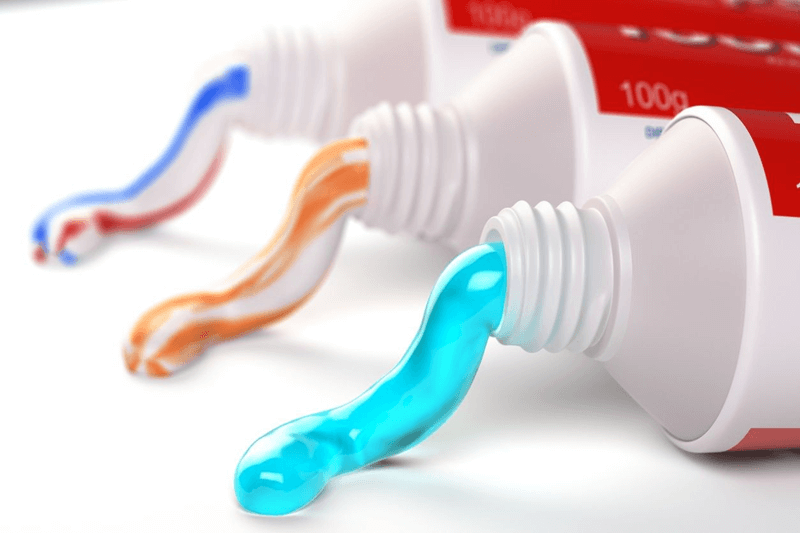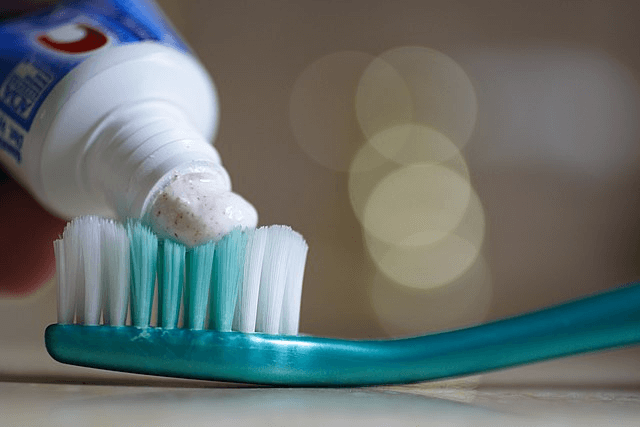Toothpaste is more than simply an essential part of your oral hygiene routine; it plays an important role in protecting your teeth and gums. The type you select can have an impact on anything from cavity prevention to enamel strength. However, many of us take a tube off the shelf without considering how it could affect our dental health.
With gel and paste toothpastes dominating the market, selecting the best option might be difficult. Each offers unique features that are customized to individual requirements. In this article, we will explore gel vs paste toothpaste to help you decide which is ideal for your oral care needs.

A Closer Look at Gel Toothpaste: Features and Advantages
What is Gel Toothpaste?
Gel toothpaste is the most common type of toothpaste in the gel vs paste toothpaste and it is a semi-fluid and transparent toothpaste. It is generally less dense than conventional paste and it comes in a range of bright colours or clear tones. Most gel toothpastes have special functions, including teeth whitening or plaque control. They generate a lesser amount of foam once you brush them, which makes them ideal for use by people who do not like lots of foam.
Fluoride gel toothpaste often contains other ingredients like natural agents to enhance breath or have antibacterial properties. Also, gel toothpastes are not as abrasive as pastes which is advantageous, especially for people with sensitive teeth.
Pros of Gel Toothpaste
Here are a few benefits that you can get from the use of the gel paste:
- Gentle on Teeth: Tooth gel is less abrasive than toothpaste paste Gel toothpaste is a better type as compared to toothpaste paste. If you have sensitive teeth or gum this makes it suitable for you to use when brushing your teeth.
- Targeted Benefits: The majority of the gels are developed to tackle specific dental issues because they either have whitening or deep-cleaning properties.
- Kid Friendly: Particularly for children, the smooth and colorful design makes it easier to brush your teeth.
- Less Foam: Gels produce less foam, resulting in a more comfortable brushing session without excessive lather.
- Easy Application: Gel toothpaste spreads more easily across teeth, covering bigger areas with fewer strokes. It is especially beneficial for those who are having busy routines.
Cons of Gel Toothpaste
Along with the advantages, here are some drawbacks to consider in the gel vs paste toothpaste comparison:
- Stain Removal: While gentleness is one of the benefits, it may not remove tough stains as effectively as a paste.
- Limited Flouride Options: Not all toothpaste may contain fluoride that helps in preventing cavities, thus reducing their efficiency.
- Cost: Gel toothpaste on average is slightly more expensive than paste toothpaste, depending on the brand you are selecting.
- Less Refreshness: Some of the users have also complained that gel toothpaste does not give a long-lasting freshness or mint flavor as with the pastes.
All About Paste Toothpaste: Benefits and Features
What is Paste Toothpaste
Paste toothpaste is the most common type of paste. It is thick and classic. It is normally white or slightly off white in color and is packed in a tube with a nozzle for squeezing. The consistency is denser than gel, which is why the product is more solid in its composition. Such a product is designed to clean the teeth, make the breath fresh, and protect against plaque and caries. Most paste toothpastes contain fluoride which contributes to the building of tooth enamel and fighting decay. Many people have used paste toothpaste and therefore it is a great candidate to be used in the gel vs paste toothpaste debate.
Pros of Paste Toothpaste
Paste toothpaste has several benefits that make it the best among gel vs paste toothpaste for several reasons.
- Cleaning power: The thick formula of the paste makes it highly effective for removing plaque and ensures clean teeth.
- Cavity Protection: Most of the toothpastes have fluoride in them. This reduces the risk of tooth decay and strengthens the enamel.
- Availability: Paste toothpaste comes in various formulations to address specific oral health needs. That way, you can easily find it in almost every store.
- Adherence: It has a thick consistency that binds to the toothbrush and does not make a lot of splatter when brushing.
- Affordable: Paste toothpastes are typically affordable as compared to the other available choices.
Cons of Paste Toothpaste
- Abrasiveness: For those who have sensitive teeth or gums, the paste toothpaste may feel somewhat coarse because of its thick texture. This can be especially so if you brush with a lot of pressure.
- Quickly Dries Out: When exposed to air, paste toothpaste can dry out faster. This makes it less ideal for extended brushing sessions.
- Usage: In case you want to cover all your teeth evenly, you may require slightly more paste than gel.
- Limited Appeal: Although it works well, the paste’s consistency might be a problem for those who want to have a smooth brushing surface.
What is the Difference Between Gel and Pate Toothpaste?
Both gel vs paste toothpaste have their own benefits, which is why it can be challenging to decide which one to use. Gel and paste toothpaste both have the properties of cleaning and protecting the teeth, but their structure and performance in specific dental needs are different. Knowing these variations will enable you to choose the optimal best depending on your priorities in dental hygiene.

Texture and Consistency
The way gel and paste toothpaste feel while brushing is a big deal for many users, which makes gel vs paste toothpaste a subjective issue. Gel toothpaste is less thick than paste and therefore it is easy to spread over teeth and gums. This makes it less messy. It also has a washing ability and does not leave any residues on the material after washing.
Paste toothpaste, on the other hand, feels heavier and thicker and some people find this comforting as they feel that their teeth are being cleaned better.
Ingredients and Formulations
Slilica-based agents are often included in gel toothpaste for polishing and mild cleaning. This works well for maintaining enamel health without excessive wear. Some have advanced cleaning ingredients like enzymes that dissolve plaque gently.
Contrary to this, paste toothpaste is more likely to have calcium carbonate or similar abrasives in it. These are excellent for removing stubborn debris and stains. If you consume a lot of staining beverages like coffee, tea, and wine, the abrasives in toothpaste might be more effective.

Effectiveness in Whiteness and Cleaning
The kind of toothpaste you use will affect the outcomes of cleaning and whitening. Thanks to its abrasive action, paste toothpaste shines in, eliminating tough stains and giving a polished sense after brushing. This makes it ideal for deep cleaning jobs.
Though less abrasive, gel toothpaste is quite good in preserving a natural white smile. Certain gels also contain innovative whitening technologies designed to lift surface stains without sacrificing enamel health.
Packaging and Appearance
Gel toothpaste is frequently marketed with sleek, modern designs emphasizing innovation and freshness, which appeals to younger users or families. Some gel toothpaste also comes in transparent packaging, allowing users to see the Dental Products.
By contrast, the packaging for paste toothpaste sometimes emphasizes its conventional dependability and potency. Older generations that appreciate familiarity with their oral care products will find resonance in the traditional design. Furthermore, paste toothpaste is available in the larger tube which makes it cheaper than the gel toothpaste depending on the gel vs paste toothpaste debate.
Gel Toothpaste vs Paste Toothpaste: Which is Better?
Your particular Dental Care demands should guide your choice of gel or paste toothpaste. Though each has different priorities in mind, each provides special advantages for whitening, sensitivity, and everyday cleaning. Below are the further details of gel vs paste toothpaste.
For Whitening Goals
Gel toothpaste is sometimes recommended for whitening because of its tailored compositions. Many gels, with active components like hydrogen peroxide, are meant to target surface stains, therefore providing a smoother and more even application on teeth. For slow whitening across time, this makes them quite successful.
For Sensitive Teeth
Usually, the safer choice if sensitivity is a problem is gel toothpaste. Its milder composition reduces gum and tooth sensitivity, causing irritation. Many gels contain desensitizing chemicals that protect enamel while offering relief, such as dental fluoride or potassium nitrate.
For those with specific dental needs, 3D printing technology like Aidite Dental Gingiva Resin provides tailored solutions for creating precise, lifelike gingival restorations, offering enhanced compatibility and comfort, especially for patients with sensitive teeth.
For Everyday Cleaning
Paste toothpaste is still a dependable choice for everyday cleansing. Its mild abrasives and thicker consistency help greatly remove plaque, therefore lowering the risk of gum disease and cavities. Pastes are also more likely to contain fluoride in levels advised to stop tooth decay.
Final Decision: Tailored to Your Needs
Your particular oral health goals will ultimately determine whether you choose gel vs paste toothpaste. Gel toothpaste has focused treatments for whitening and sensitivity. Paste toothpaste provides consistent results for complete daily cleaning. But, no matter which toothpaste you choose, pairing it with high-quality dental equipment ensures the best overall dental health.
FAQs about Gel vs Paste Toothpaste
1. Is gel or paste toothpaste better for whitening?
Gel toothpaste is usually less abrasive and more focused on stain removal and demonstrates greater whitening performance than paste toothpaste. Although paste toothpaste can be quite effective, over time, its abrasiveness could erode enamel. A gel is usually the milder option if your main objective is whitening.
2. How to tell if toothpaste is gel or paste?
The texture is where paste toothpaste differs from gel. Gel toothpaste is clear and silky, while the paste is opaque and thick. The look and feel should enable you to determine the kind you have.
3. Is gel or paste toothpaste better for sensitive teeth?
The argument between paste toothpaste vs gel for sensitive teeth favors gel because of its lower abrasiveness and soothing properties. Sometimes pastes aggravate sensitivity, thus gels are the softer and more appropriate everyday use choice.
Conclusion
Dentists stress the need to choose the correct product for your daily dental health routine. Knowing the strengths of gel vs paste toothpaste will make all the difference whether your preference is the mildness of gel or the stain-fighting ability of paste. While pastes provide complete cleaning and a pleasing brushing experience, gel offers specific care for sensitivity and whitening. Knowing toothpaste paste from gel can help you to choose the best one for your teeth and gums.



